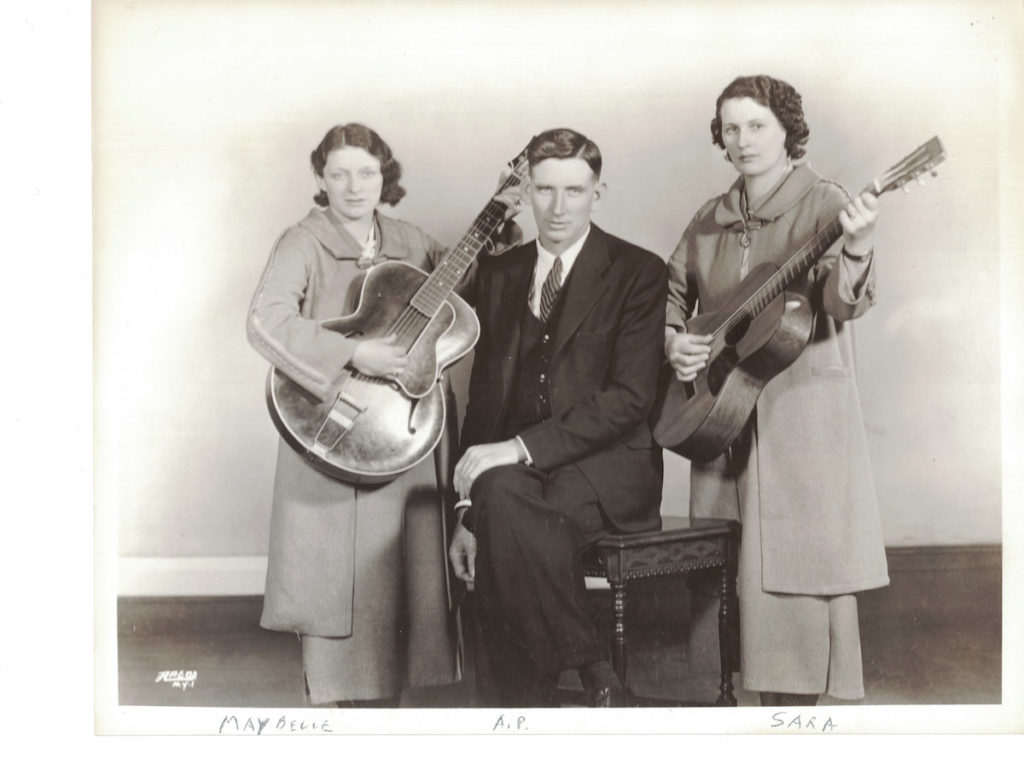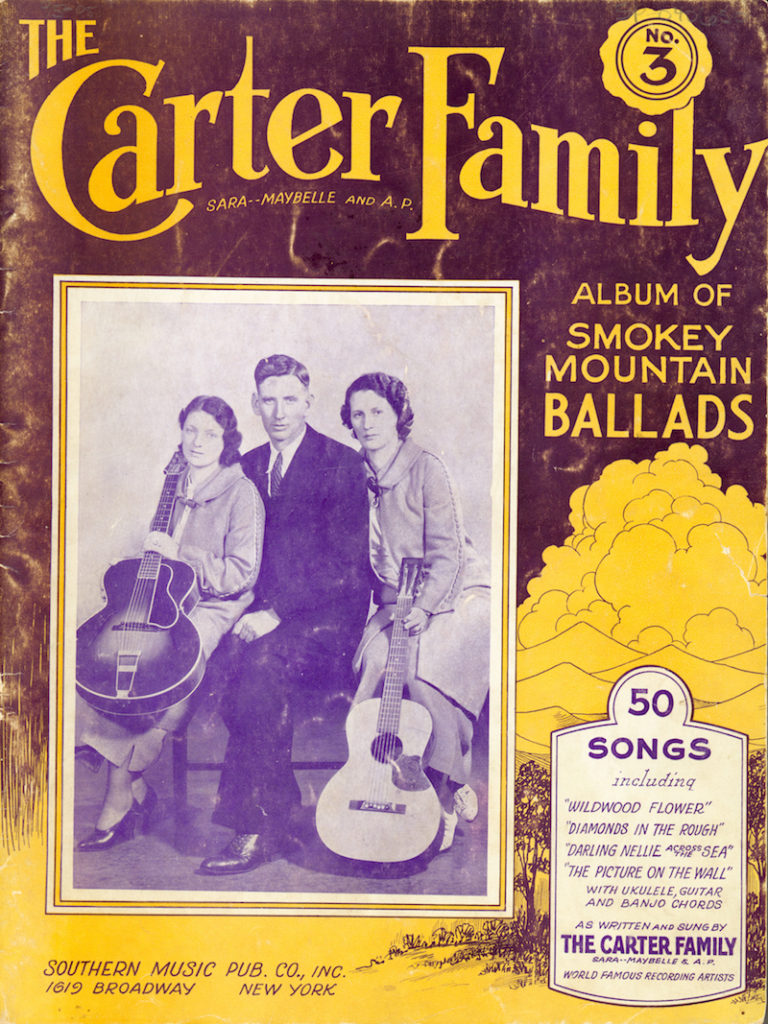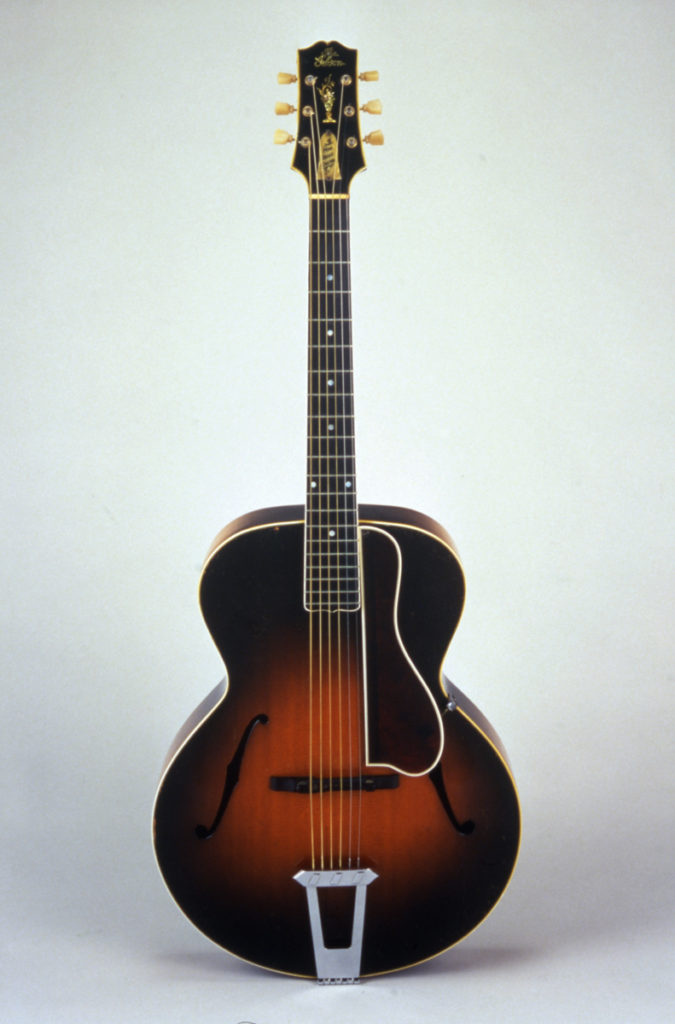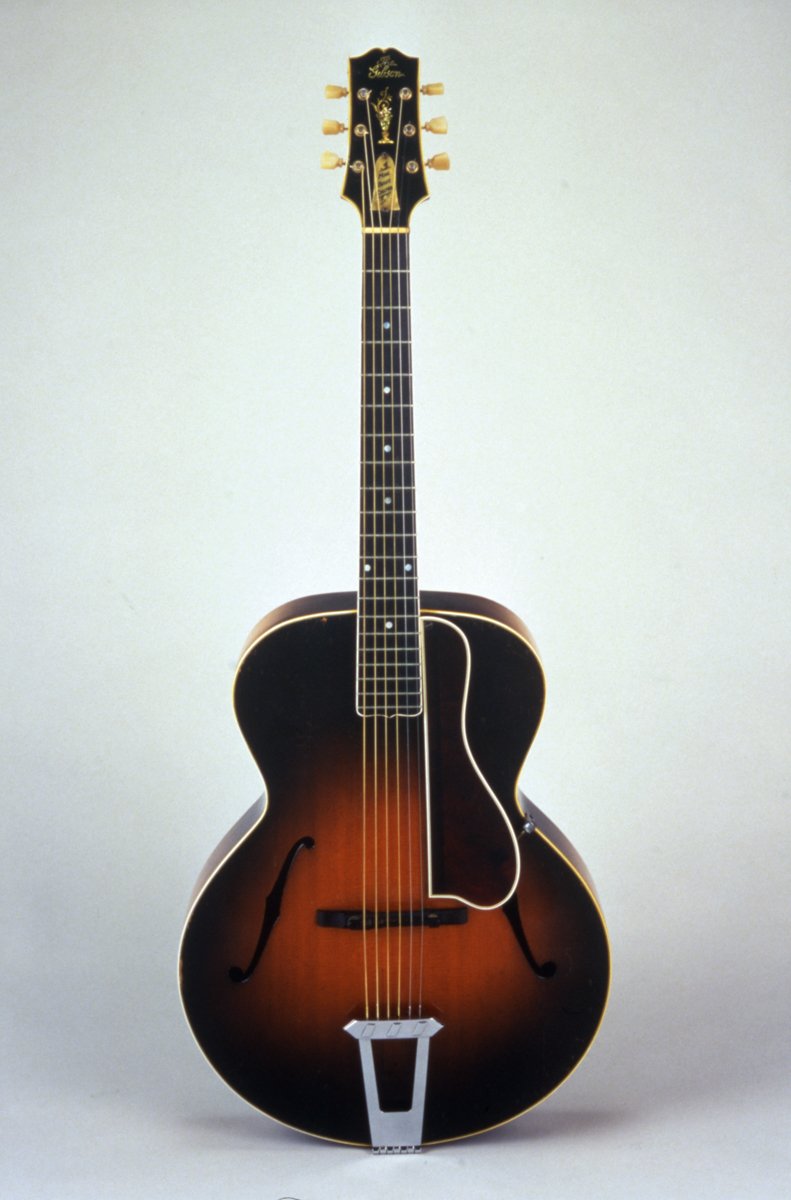“Instrument Interview” posts are a chance to sit down with the instruments of traditional, country, bluegrass, and roots music – from different types of instruments to specific ones related to artists, luthiers, and songwriters – and learn more about them. Ten questions are posed, and the instruments answer! Today we talk to one of Maybelle Carter’s guitars:
What model are you, and when were you made?
I’m a 1928 Gibson L-5 guitar, made at the old Gibson factory in Kalamazoo, Michigan. Lloyd Loar, the famous engineer who redesigned a lot of Gibson’s product line in the early 1920s, introduced my model in 1922 as the top-of-the-line guitar. Unlike most earlier guitars, I have a carved arched top and violin-style F-holes instead of the round sound hole in the middle. You might say I’m like a guitar that thinks it’s some kind of oversized violin. But at least Maybelle didn’t try to play me with a bow!
Well, speaking of Maybelle Carter, when did you become her instrument? Did she play you at the famous Bristol Sessions when The Carter Family made its first recordings?
Well, no, Maybelle didn’t have me yet when she did those recordings in Bristol in 1927. That was actually a year before I was built in Kalamazoo. On those first six sides that Maybelle recorded with Sara and A. P., she was playing a cheap Stella flat-top guitar. That would have been a good enough instrument for most early country musicians, but Maybelle was no ordinary player. She deserved something bigger, louder, with a more authoritative voice. So after their records started selling well and Ralph Peer invited them to come to New Jersey to make new recordings with better equipment, Maybelle and her husband Eck (A. P.’s brother) went out and bought her the best guitar they could find. I cost $275, which was an awful lot of money in 1928.

What did Maybelle do to bring out your true and distinctive voice? What made her such a great player?
The biggest thing, I guess, is that she played me with such command and authority. She was the driving force of the band’s instrumentation, since Sara just played some lighter second guitar or autoharp, and A. P. hardly ever played any instrument on record. Sometimes Maybelle was the whole band! So she took some of the existing folk guitar styles and made them strong, polished, and professional. She made the guitar into a solo instrument in the country band, playing melody between vocal refrains and also providing a driving rhythm.
Really? How on earth did she do that?
Mostly it was her powerful right hand. It still makes me shudder to think about how clear and purposeful she was when she played. She commanded the sound out of me. Her most famous method was a thumb-lead style, which some people call the “Carter scratch.” I never did quite understand that, since it wasn’t really scratchy sounding at all. She wore a thumbpick on her right hand and used that to play bass notes and all those wonderful melodies on the bass strings of the guitar, and meanwhile she had a metal fingerpick on her index finger and used that to strum those great, driving chords on the upper strings. A real one-woman band!
How did that style suit you, as an instrument?
It suited me perfectly. Because I have an arched top and F-holes, my bass strings have more punchiness and less sustain than flat-top guitars. With all the activity of Maybelle’s right thumb and forefinger going on simultaneously, it was much better that my notes were shot out like cannon balls without any ringing sustain to muddy it up. In her hands, I was a melodic rhythm machine.
That idea of using your thumb and one finger reminds me of the clawhammer banjo style. Is it similar?
Hey, I’m a guitar! You’re going to make me talk about banjos? I’m just kidding. You know, Maybelle did play banjo in that clawhammer style, so that may have given her some notion of using her thumb. But really the styles are very different, because in thumb-lead guitar, the thumb is the one playing the melody. The motion of the right hand is totally different, too.
Did she always play using that thumb-lead style? Or did she use any other styles?
No, although it was her main style and the one that influenced younger players the most. Maybelle also developed into a really fine flatpicker, using the kind of pick that most guitar players favor nowadays and which used to be called a “straight pick.” With a flatpick she was able to play more on my treble strings, a predecessor to the way later bluegrass guitarists play their lead solos. She really liked to do this on blues songs like the “Coal Miner’s Blues,” but she also used this approach on songs like “You Are My Flower.” Boy, she made me sound amazing on that one. As for other styles, she didn’t do much of what people call fingerpicking, since that wasn’t a strong enough sound for her. And Maybelle did play slide guitar, but she didn’t use me for that.

What happened to you after the original Carter Family disbanded in 1944?
Maybelle continued playing me with the Carter Sisters, who were really her daughters, and in all of her music-making up to the time she died in 1978. She hung on to me until the end, even when money was tight and she could have sold me. We had a special bond, and I never sounded the same when somebody else tried me out – not even Chet Atkins. Maybelle played me on her solo records in the 1960s and 1970s, when she went on tour with the New Lost City Ramblers, and when she did “Keep on the Sunny Side” on the Nitty Gritty Dirt Band’s Will the Circle Be Unbroken? album.
What about “Wildwood Flower” from the Circle album?
No! Even though that was probably her most famous guitar song, with the Dirt Band she wanted to play it on autoharp just because she’d never recorded it that way.

Finally, what are you up to today?
Today I’m proudly on display at the Country Music Hall of Fame and Museum in downtown Nashville, alongside Sara’s autoharp, Bill Monroe’s mandolin, Earl Scruggs’s banjo, and Barbara Mandrell’s pedal steel. Back in 2004 I was almost sold off by my owner who had loaned me to the museum, but Maybelle’s family really wanted me to remain. I’m so glad they figured out a way to buy and keep me there in such illustrious company. I just wish I could get played more these days, but then again it’s OK. Nobody will ever play me the way Maybelle did.
Guest blogger Gregory Reish is the Director of the Center for Popular Music at Middle Tennessee State University. He is a scholar, teacher, and performing musician with expertise in a wide range of American vernacular styles.


